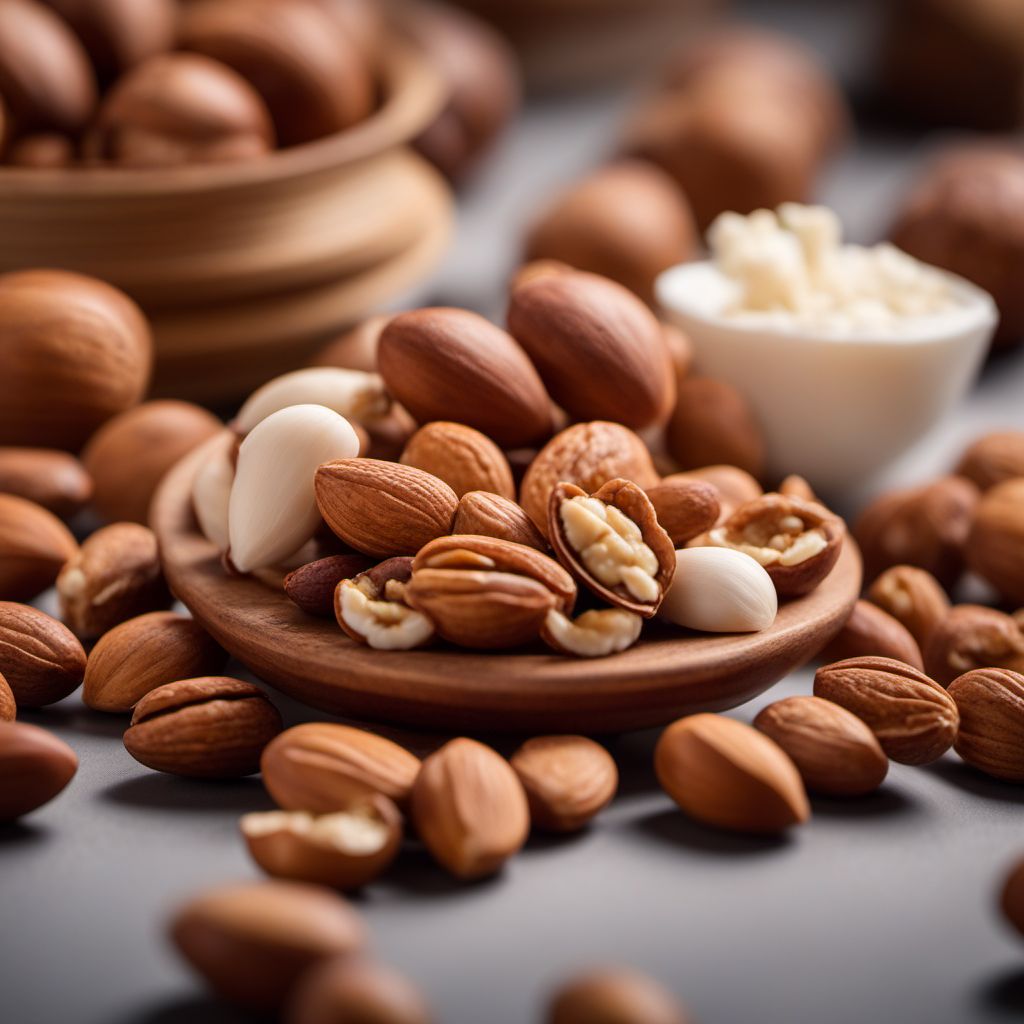
Ingredient
Nuts and primary derivatives thereof
The Nutty Delights
Nuts and their primary derivatives, such as nut butters and flours, come in a wide range of varieties, including almonds, walnuts, cashews, and peanuts. They have a distinct nutty taste, a crunchy texture, and are often used in both sweet and savory recipes.
Origins and history
Nuts have been consumed by humans for thousands of years and have a rich history in various cultures around the world. They are native to different regions, with almonds originating in the Middle East, walnuts in Central Asia, cashews in Brazil, and peanuts in South America. Nuts and their derivatives have been valued for their nutritional benefits and culinary versatility.
Nutritional information
Nuts and their primary derivatives are nutrient-dense ingredients, packed with healthy fats, protein, fiber, vitamins, and minerals. They provide a good source of energy and are beneficial for heart health when consumed in moderation.
Allergens
Nuts and their primary derivatives can be allergenic for some individuals, particularly those with nut allergies. It is important to be cautious and read labels carefully to avoid any potential allergens.
How to select
When selecting nuts, choose ones that are fresh, without any signs of mold or rancidity. Look for nuts that are plump, with a uniform color and a crisp texture. For nut butters and flours, opt for products that are made from high-quality nuts without any added preservatives or artificial ingredients.
Storage recommendations
To maintain the freshness of nuts, store them in an airtight container in a cool, dry place, away from sunlight. Nut butters and flours should be stored in the refrigerator to prevent spoilage. Proper storage helps to preserve their flavor and prevent rancidity.
How to produce
Growing nuts requires specific climatic conditions and can be challenging for amateur gardeners. However, some varieties, such as almonds and walnuts, can be grown in certain regions with suitable climates and proper care.
Preparation tips
Nuts and their primary derivatives can be used in a wide range of culinary applications. They can be enjoyed as a snack, used as toppings for salads or desserts, incorporated into baked goods, or transformed into nut butters and flours for various recipes.
Culinary uses
Nuts and their primary derivatives are commonly used in both sweet and savory dishes. They are often found in desserts, such as cakes, cookies, and nut bars, as well as in savory dishes like salads, stir-fries, and nut-crusted meats.
Availability
Nuts and their primary derivatives are cultivated and available in various regions around the world, depending on the specific nut variety. Almonds, for example, are widely cultivated in California, while cashews are primarily grown in tropical regions like India and Vietnam.

